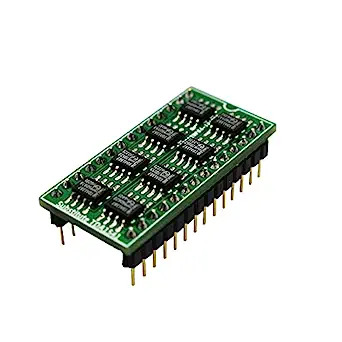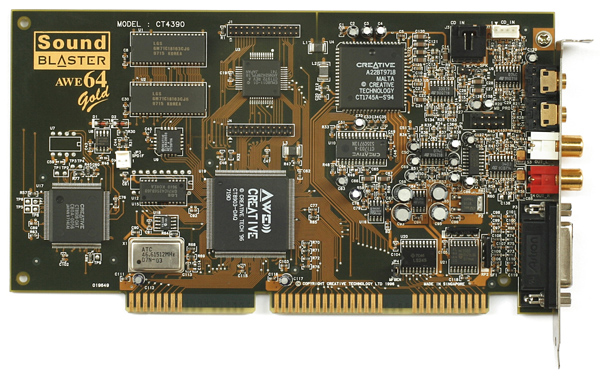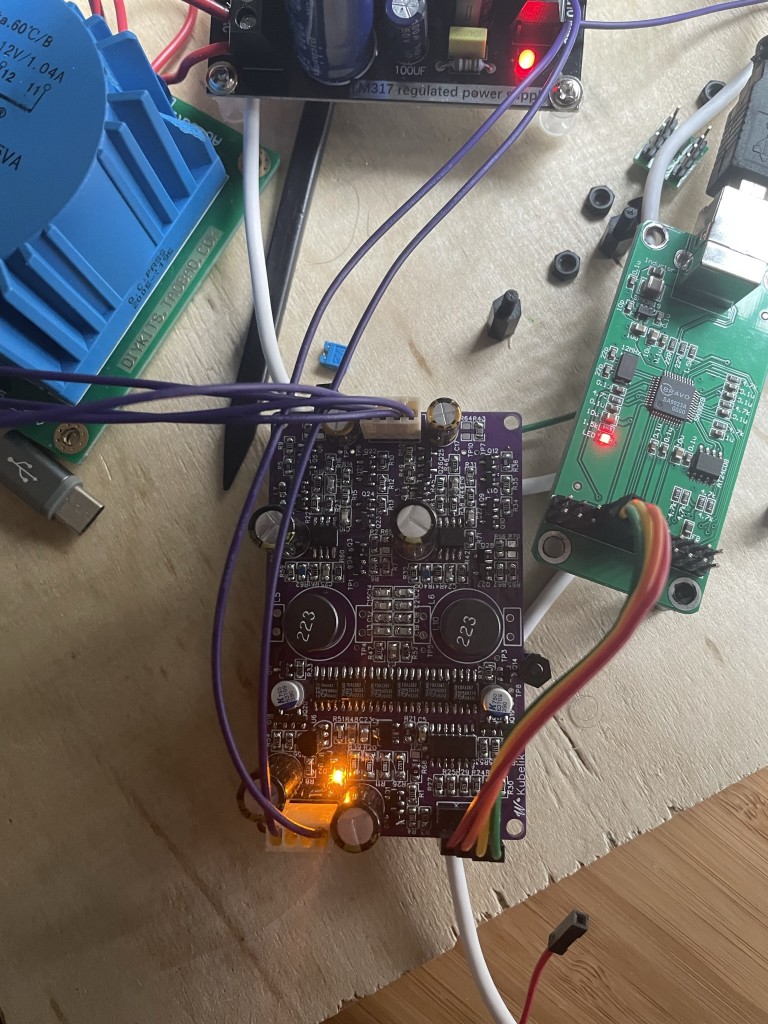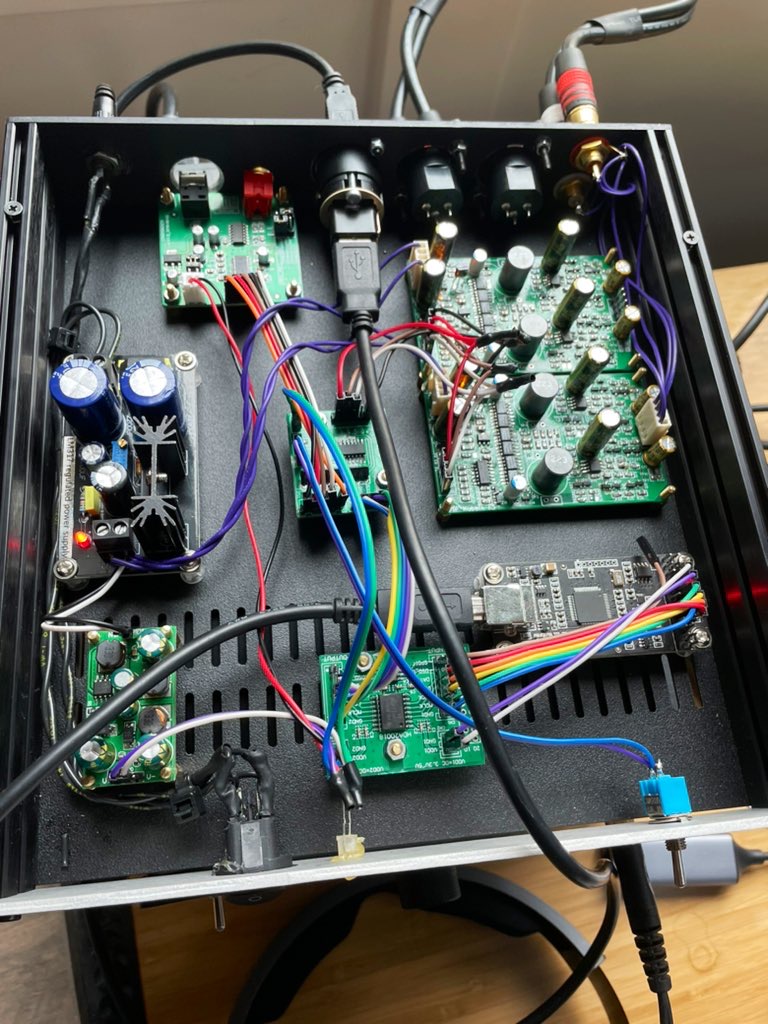The Kubelik NOS Dac
The TDA1387 is quite an interesting little dac chip. It’s super super cheap to buy from places like AliExpress, highly unlikely to be faked since they’re so cheap, and until the wicked smart Richard Dudley aka abraxalito aka abrax on DiyAudio started working on the lingDac, pretty much not something audio nerds cared about. It’s been quite fun see it’s rise to semi-audiophile prominence over the past few years. Lots of random eBay dacs based on it can be found for cheap as well as other random things. This replacement for the expensive and often faked TDA1541 made up of stacked TDA1387s is absolutely my favorite.

You can actually make your own. GitHub link
The chip itself is 1990s old and, from what I understand, much of the current stock is stuff recycled from this 90s SoundBlaster SoundCard.

The TDA1387 is the tiny chip sandwiched between the 4 capacitors bottom-ish right.
Anyways, Abrax started working to see how sweet a dac he could make for as little money as possible. The lingDac was the result. Further iterations resulted in the Kueblik. Did I mention that Abrax is a smart dude?
The Kubelik uses 6x TDA1387s in parallel. Abrax has some subjective impressions and reasoning to why parallelling TDA1387s is important in making it perform at it’s best. I recall some measurements confirming things like THD going down with stacking as well. Feel free to have fun with a 36 chip monster build if you really want. I’m not sure anyone outside of Abrax has actually built that, though.
The output I/V stage on the Kueblik calls for OPA2209 opamps. I had trouble sourcing them from legit distributors due to The Pandemic™ and used OPA1642 instead. The OPA1642 sounded fine to me.
The Kubelik requires 20vdc, which honestly kind of sucks. It is just not a common voltage for this kind of thing.
I had a bunch of power supply pcb boards from other projects — the ones here are great — that make great linear power supplies, but neither the parts on hand or ambition to mod one of them for something like a LM317 so I could get 20vdc. What I really like about those boards is they have dual outputs. Being able to get +/- 5vdc and +/-Xvdc means I can then power whatever I2S thing I need off a single power supply and keep it all fairly tidy.
Instead, I used a 18vac transformer with a small, and cheap, LM317 based power supply to get 20vdc. For one build, that was it. I used a cheap Chinese USB I2S interface that was bus powered so no need for 5vdc

The other build I wanted to be able to use optical toslnk or USB for I2S. For that one I used an 18vac/1.5amp wall wort to the same LM317 board, split the 20vdc to the Kueblik board, and to a cheap step-down converter. That powers the toslink board as well as the I2S switching board. It’s not pretty, it’s definitely a brute-force approach, and the LM317 gets a bit warm. But it works.

What you’ll notice about this one is that there are two Kubeliks in there. You can switch the signal phase of the board pretty easily and, using two boards, get balanced output! So this one is exactly that — a balanced and single ended output build. I also made a super hacky 12S splitter cable coming off the I2S switch since the same I2S single has to be split to both boards. I’m kind of proud of that dumb hacky splitter.
As far as I know I’m the only person outside of Abrax to complete a balanced Kubelik.
Building the Kubelik is not too bad. Each board costs about ~$20 total to build, including a few extras of each component to account for the inevitable “shit, I dropped that 3mm resistor and can’t find it”. That will happen.
The worst part is 100% that almost none of the build is through hole. I did have a board that was giving off odd voltages, and after some probing, debugging, and reflowing of solder to no avail, I decided to just throw it away. It was cheap enough and easy/fast enough to hand solder that further fussing with that particular board did not seem worth it.
If I were to do it again, I’d build one board by hand and have the rest of the boards made and populated by somewhere like JLPCB. Or at least have as many as possible of the SMD parts soldered there, by a machine. I made these during COVID and all the supply chain issues, so I had to source the components from a few different distributors, limiting my ability to have JLCPCB do that.
In the end, I built three functional boards, which went into two dacs — none using what I’d consider semi-high quality components. In-fact, most components were def mediocre quality. What I got back were two dacs that sound pretty damn good. Certainly no worse than my other dacs. Can’t hear any noise, drums sound like drums, and rock ‘n roll rocks.
I think Abrax’s goal was met: it’s a project to build a dirty cheap dac that doesn’t suck being a dac. It can play 16bit/44.1hz PCM. That’s it. It forces you to not give a shit about a fancy DSD/MQA/32bit/1.21gigwatt I2S interface. A cheap one supporting fewer formats is preferrable. It has enough built-in sane power filtering that a super cheap LM317 power supply is fine. Nothing needs adjusting once built. The entire thing is a one trick pony. In a weird meta way it reminds of the Unix Philosophy.
Thanks for the super fun and good sounding dac, Abrax.
Pros:
- Sounds good
- Cheap to build
- Doesn’t need expensive anything to sound good
- SMD makes it tiny
- Easy to mod for balanced
So good it’s bad:
- Cheap and small enough that debugging build issues might not be worth it. Just build another one.
Cons:
- SMD makes it tiny and sucky to solder by hand
- 20vdc sucks
